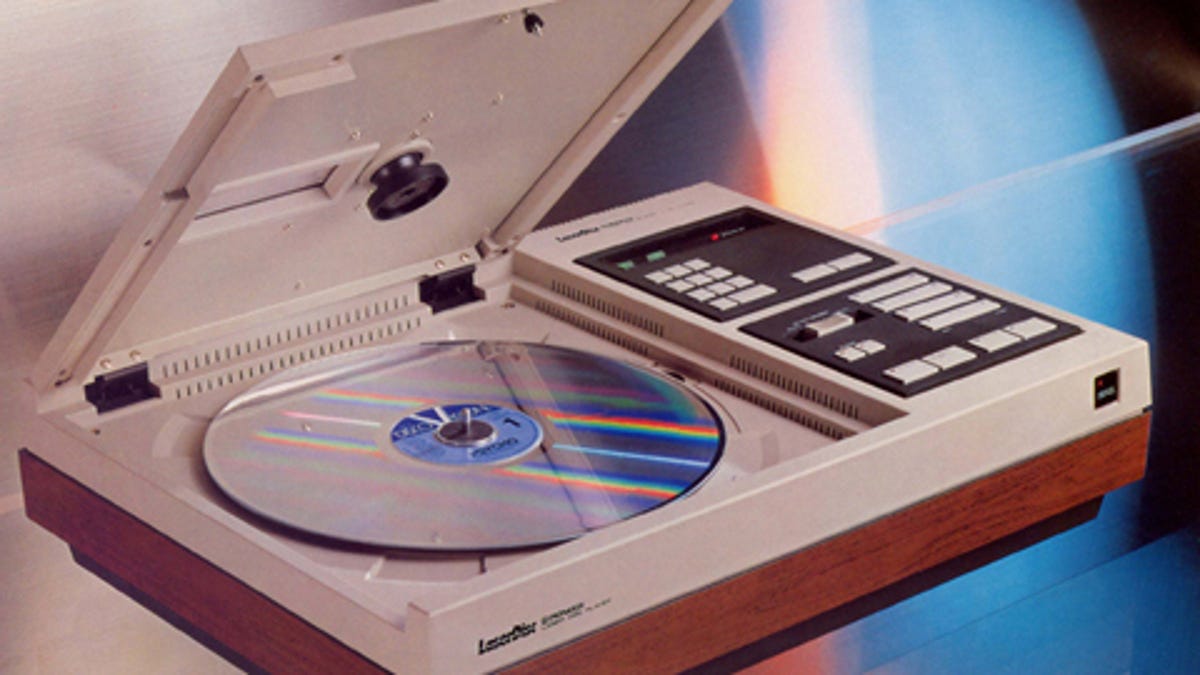Remember when video discs were the size of LPs?
The analog vs. digital debates aren't limited to audio. There were more than a few analog video holdouts when the DVD debuted in 1997.

Years ago, long before the dawn of the DVD or Blu-ray formats, consumer video was strictly all-analog, from the very first broadcasts right up to the introduction of the LaserDisc. The 12-inch, double-sided LaserDisc looked like a giant CD, but the video was analog encoded on two single-sided aluminum discs layered in plastic. The discs that debuted in 1978 had analog audio soundtracks, but later discs featured stereo digital sound. Millions of players were sold in the U.S., but LaserDisc was, even during the height of its popularity, a niche format that appealed mostly to videophiles. It had much greater success in Japan, and was used in 10 percent of all households. LaserDisc video quality was a big step up from VHS and Beta tapes. Pioneer's LaserDisc players, starting with the VP-1000 in 1980, dominated the market, but in 1981 RCA started a minor format war with its analog CED video discs (an LP-like grooved video disc), but the inferior system faded quickly.
My friends with large LaserDisc collections were skeptical of DVD's quality, and were unhappy with the first DVDs' compression artifacts. The LaserDisc supporters gleefully pointed to poor DVD transfers, ridden with aliasing, blotching, and pixilation woes. LaserDiscs were 100 percent compression-free. There were significant DVD compatibility issues, some discs wouldn't play in some players. I spoke with Geoff Morrison about his take on the LaserDisc, and he said "There was a natural smoothness to the image, because it was analog, and over most televisions [of that era] there wasn't a radical change between a good LaserDisc and the first DVDs." Even the Criterion Collection, known for releasing exquisitely restored editions of classic films, didn't immediately abandon the Laserdisc format.
To be fair, it didn't take all that long for the DVD engineers to sort out the mastering problems, but in the early days it looked like we were going to have an analog vs. digital war on our hands. It didn't happen, but the LaserDisc true believers kept the faith long after DVD reigned supreme. Pioneer continued selling players well into the DVD age and ceased production in 2009.
Did you ever own or watch LaserDiscs? Share your memories in the Comments section.

